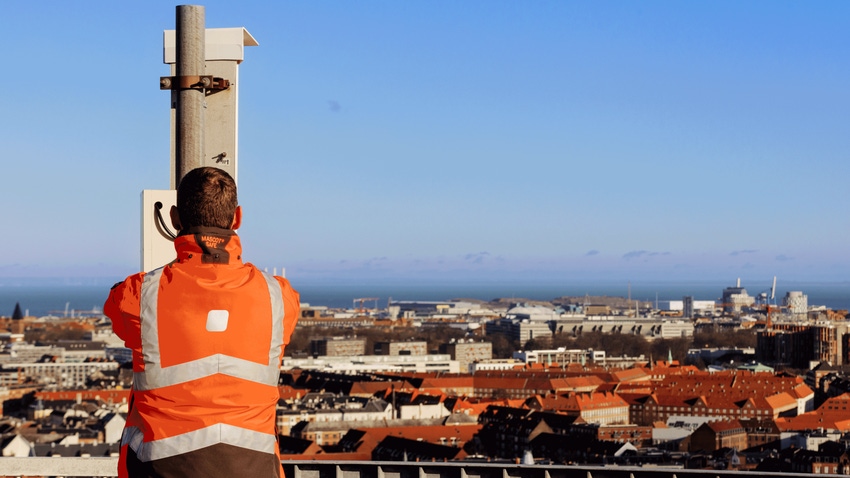Doing the splits: at the coalface of a netco/servco separation
Executives from VEON and Telenor discuss lessons learned from splitting off infrastructure assets, with views on optimal approaches to this complex task.

Presentations by Jon James, the CEO of Danish serviceco (or servco) Nuuday, have become something of a highlight at industry events as he describes the challenges of managing the company's decades-old IT system, called Columbus.
Nuuday was created after former Danish incumbent TDC was split into two standalone independent businesses, the other being netco TDC Net. In the past couple of years, James has made no secret of the fact that splitting up TDC was a difficult and painful process, primarily owing to its legacy systems.
Brian Klafstad, global account manager at Red Hat, wryly observed that this is perhaps a good example of how not to do a netco/servco split at a traditional, integrated telecom operator. "This is a moment where you actually have the ability to clean up some technical debt," he said.
Klafstad was participating in a panel called "Integrated telco versus the netco/servco model" at an event organized by Telecoms Europe this week, during which two telco groups discussed the concept of the netco/servco split, and how to approach this complex task.
It's certainly a topical theme, as operators explore how best to exploit their infrastructure assets while balancing the needs of the retail "servco."
Indeed, Telecom Italia is in the process of offloading its fixed-line grid this year, while the past few years have seen operators in a number of markets split off their mobile tower infrastructure assets, placing the towers in a separate unit and in some cases selling them to independent towercos such as Cellnex, or inviting private equity to take a share.
Telcos such as Telefonica and Vodafone have also been busy creating joint ventures to help fund the deployment of costly fiber-to-the-premises networks.
Strategic shift
International operator group VEON is pursuing an asset-light model as part of its objective to become a digital operator that sells services in adjacent sectors, such as fintech, education, healthcare and entertainment.
In 2022, VEON CEO Kaan Terzioğlu said VEON still owned close to 36,000 mobile towers, "mostly concentrated in Bangladesh, Pakistan, Kazakhstan and Uzbekistan, and Ukraine." He indicated that tower sales make sense because they are "not an asset that needs to be owned by the telecom operators."
In late 2023, the operator agreed to sell part of its tower portfolio in Bangladesh to Summit Towers for about $100 million. The transaction will see Bangalink transfer more than 2,000 towers to Summit and then form a long-term service partnership.
According to Lasha Tabidze, group chief digital operations at VEON, there are some important aspects to keep in mind when establishing separate tower companies, whether or not with a view to potentially selling them at a later stage.
First and foremost, he said, each market will be different depending on the regulatory environment. For example, VEON attempted to sell its towers in Pakistan in 2018 but was forced to terminate the sale as it was unable to obtain all regulatory approvals.
Tabidze was insistent that creating separate tower companies is not just about saving costs or raising capital, but a strategy shift that needs to be carefully thought through with a clear endgame in mind.
"It shouldn't be targeted as a cost saving; it should be targeted as an efficient model that all the companies are benefiting from," he said.
Tabidze and Pål Grønsund, director of cloud strategy and architecture at Telenor, agreed that the ambition should be to create dedicated organizations with the necessary talent and incentives to improve efficiencies, become more sustainable, and explore new service offerings to attract customers and drive additional revenue.
Telenor is another telco that is following a strategy of developing or divesting assets in its portfolio. This year, the focus is on potentially monetizing the group's Nordic cellular towers business. As recently outlined by group CEO Sigve Brekke, "extensive work has been done in terms of streamlining the tower business and setting ourselves up to potentially crystallize the tower values."
Telenor has already brought more than 20,000 towers in Norway, Sweden and Finland into Telenor Towers, which operates as an independent company. It said it is now ready to start exploring potential partnership opportunities or deals for its towers business.
Grønsund said a key motivation is to focus on the improved utilization of these assets. "That could be attracting new customers, it could be attracting external investors. And another important thing is also how to improve the main processes," he said.
He noted that Telenor Towers has already been able to bring in new customers and business models such as road authorities, weather sensors, local municipalities and more. He also pointed to a focus on the development of new, modern data centers that "are extremely energy efficient" and can, for example, recycle energy to heat homes.
"It's still early days, the data center is being built, and is not fully ready for hosting the customers yet, but I think definitely looking into sovereign clouds-type of solutions," Grønsund added.
As for VEON, Tabidze said the group has been developing its digital operator strategy for three years and already generates around 10% of its revenue from new digital services. "In future, this portion will increase," he said.
About the Author(s)
You May Also Like




_International_Software_Products.jpeg?width=300&auto=webp&quality=80&disable=upscale)







